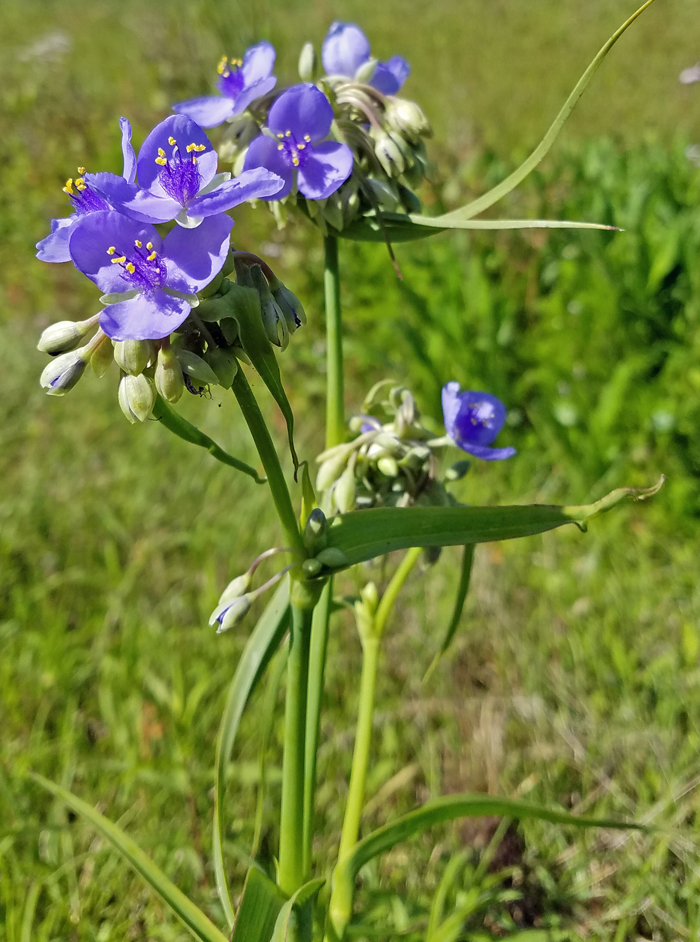
Bermudagrass hayfield with spiderwort spreading from infested road right-of-way in Jackson County. Photo credit: Doug Mayo
Michael Durham, Jason Ferrell, and Brent Sellers

Figure 1. Spiderwort can be easily identified by its clusters of colorful flowers with three petals. Photo credit: Michael Durham
Spiderwort (Tradescantia ohiensis Raf.) is a native perennial species found throughout the eastern half of the U.S. It has a large, fleshy stem with leaves that are long and grass-like. The flowers have three petals about 1/2″ wide and 3/4″ long which are typically purple to pink in color and occur in dense clusters. Spiderwort emerges in early spring, flowers in March-April, and then produces seed through mid-summer.
Spiderwort is problematic in grazing systems because it is largely avoided by cattle. Additionally, the large, fleshy stem also makes this plant an issue in hay production. When cut with a grass forage, spiderwort does not dry at the same rate as the grass and can cause spoilage when the hay is baled.
Control
Experiments were conducted in High Springs, Florida to compare the activity of commonly used pasture herbicides on fully emerged and flowering spiderwort. All herbicides were applied with crop oil concentrate (COC) at 1% v/v.
Spiderwort response to all herbicides was similar at 1 week after treatment (WAT) and control was less than 50% (Table 1). Triclopyr resulted in 86% control while very little change was noted from all other herbicides at 4 WAT. Triclopyr exhibited excellent control (95%) at 8 WAT, while the other treatments remained at 50% or less. Control of spiderwort by triclopyr began to decline shortly after 8 WAT (data not shown), and spiderwort re-established in all plots.
 Conclusion
Conclusion

Figure 2. Control of spiderwort is made difficult because of its large root crown that provides reserves for regrowth after canopy burn-down. Photo credit: Michael Durham
No single herbicide application was found to fully control spiderwort. The greatest control was found when triclopyr was applied at 32 fl oz/acre. Canopy growth did not recommence in the triclopyr plots for another 4 to 6 weeks after the initial burn-down. However, the majority of the spiderwort plants did eventually regrow in the triclopyr plots. Therefore, it is important to keep in mind that the results from triclopyr may be temporary. With this timeline in mind, producers should treat infested fields at least a month prior to cutting hay. Fortunately, producers should have at least a month after burn-down to cut and bale their hay without experiencing any issues associated with spiderwort. It will take multiple cycles of regrowth and burn down to reduce the population in a field. When feasible, hand removal is still the most effective control method.
- The How and Why of Preemergence Herbicide Incorporation for Row Crops - April 28, 2017
- Using Dicamba on Dicamba-Tolerant Crops - March 3, 2017
- Managing Dicamba Drift when using New Dicamba Resistant Cotton Varieties - January 27, 2017
